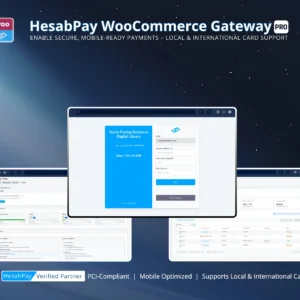Introduction: Leveraging diagnostic tools for secure troubleshooting and performance optimization.
Overview #
Effective debugging is essential for ensuring the HesabPay Gateway operates reliably, prevents transaction failures, and maintains financial integrity. HesabPay provides Free (Basic Debug Mode) and Pro (Advanced Debug Tools) options to accommodate different store sizes and complexity levels. Proper usage of these tools enhances developer efficiency, reduces operational risk, and safeguards sensitive transaction data.
1. Free Version – Basic Debug Mode #
The Free version includes a Basic Debug Mode, designed for small stores or initial troubleshooting:
-
Functionality: Logs key API responses, order status updates, and transaction events.
-
Purpose: Quickly identifies simple misconfigurations or connectivity issues.
-
Best Practices:
-
Enable temporarily during debugging sessions.
-
Disable immediately after use to avoid performance overhead.
-
Regularly archive or review logs for recurring issues.
-
Enterprise Tip: Even in small environments, maintain separated logs for Sandbox and Live to prevent accidental mixing of test and real transaction data.
2. Pro Version – Advanced Debug Tools #
The Pro version provides Advanced Debug Tools for enterprise environments:
-
Functionality:
-
Captures detailed request/response payloads, webhook notifications, and error traces.
-
Monitors transaction lifecycles, including API failures and payment status mapping.
-
-
Purpose: Isolates complex errors, validates integration integrity, and aids in enterprise-level troubleshooting.
-
Best Practices:
-
Enable only during active diagnostics.
-
Secure log storage to prevent exposure of sensitive data (API keys, transaction details).
-
Combine logs with Priority Support for rapid resolution.
-
Enterprise Tip: Implement a Log Interpretation Matrix to map common errors to solutions. This allows teams to resolve recurring issues quickly and standardizes troubleshooting across developers and operations teams.
3. Security Considerations #
Debug logs may contain sensitive information:
-
Never leave debug mode enabled on a live environment permanently.
-
Restrict access to developers or authorized personnel.
-
Ensure logs are encrypted or stored in a secure location.
Pro Tip: Treat debug logs as sensitive financial data. Implement routine audits and retention policies consistent with organizational compliance standards.
4. Workflow Integration #
-
Trigger Debug Mode: Activate when testing API credentials, Webhook connections, or troubleshooting failed transactions.
-
Analyze Logs: Identify failed API calls, invalid credentials, or Webhook delivery issues.
-
Resolve and Retest: Correct the configuration and rerun test transactions.
-
Deactivate Debug Mode: Confirm system performance and security before leaving Live environment.
Conclusion #
Debug mode is a powerful enterprise tool for maintaining the reliability and security of the HesabPay Gateway. By understanding the distinctions between Free Basic Debug Mode and Pro Advanced Debug Tools, merchants and developers can troubleshoot effectively without compromising performance or security. Proper logging practices and secure handling of sensitive data ensure smooth operation, minimize downtime, and maintain confidence in high-volume, enterprise-level WooCommerce environments.



